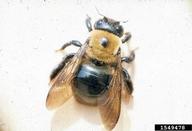 Are you seeing big, plump bees hovering around your South Jersey home?
Are you seeing big, plump bees hovering around your South Jersey home?
If this is what it looks like, don’t confuse them with Bumble Bees – they just might be the very destructive Carpenter Bee.
Image courtesy of Jim Baker, North Carolina State University, Bugwood.org
Carpenter Bees are large bees. They have a full, rounded, shiny black bottom, black shiny head, and a yellow, fuzzy back with a black dot in the center.
Male Carpenter Bees have no sting so they are harmless to humans. Female Carpenter Bees have a potent sting but use them very rarely.
 Bumble Bees are even larger than Carpenter Bees.
Bumble Bees are even larger than Carpenter Bees.
They have a full, rounded, fuzzy yellow bottom, a shiny black back with yellow near the head.
Bumble Bees can sting and will defend their nests very aggressively. They have been known to chase nest invaders long distances and have the ability to sting more than once.
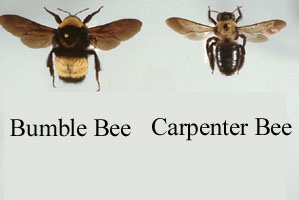
Carpenter Bees like to attack wooden window sills, siding, eaves, railings, outdoor furniture and fences.
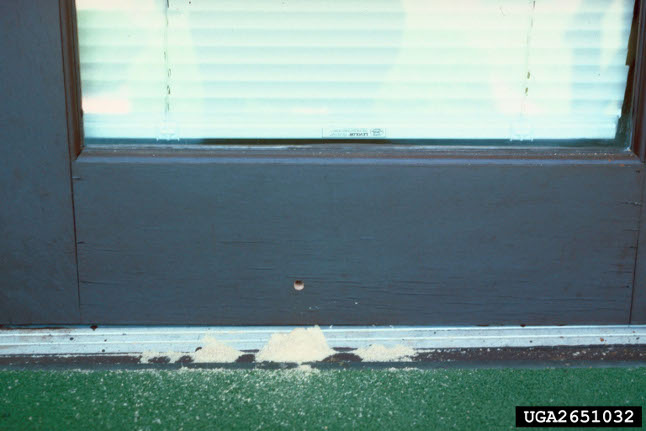
A round hole in wood with a pile of sawdust underneath is a clear sign of Carpenter Bees at work.
Image Courtesy of Lamar Merck, University of Georgia, Bugwood.org.
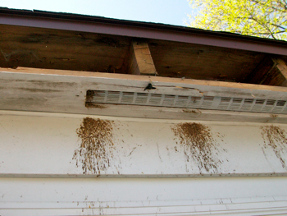
Dew stains on the soffits and fascia board of a home are another clear sign of Carpenter Bees at work near the gutters and fascia boards.
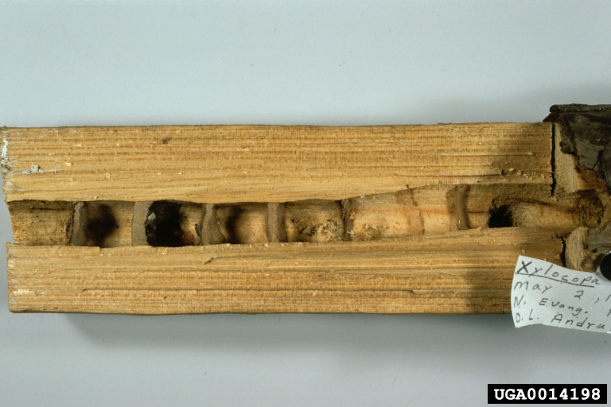 If a homeowner does not take care of the problem with the help of a Pest Control Professional, the Queen Carpenter Bee tunnels through the wood to lay her eggs in chambers.
If a homeowner does not take care of the problem with the help of a Pest Control Professional, the Queen Carpenter Bee tunnels through the wood to lay her eggs in chambers.
This is an example of the kind of damage a Carpenter Bee can do very quickly inside the wood.
Image Courtesy of USDA Forest Service Archive, USDA Forest Service, Bugwood.org.
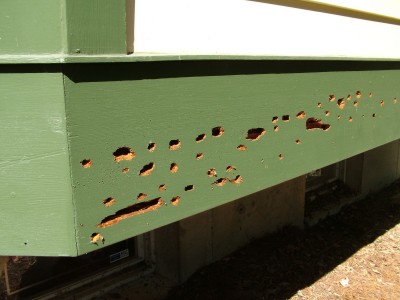
Left un-checked – a secondary problem will occur as birds (especially woodpeckers) peck at the wood to get to the larvae for dinner!
Call AB-Con today and have your Bee problem solved correctly from the start!
